Led by GDI Hub at UCL focusing on pulling together learning from across AT2030 to address the question ‘What Works to improve access to AT’.
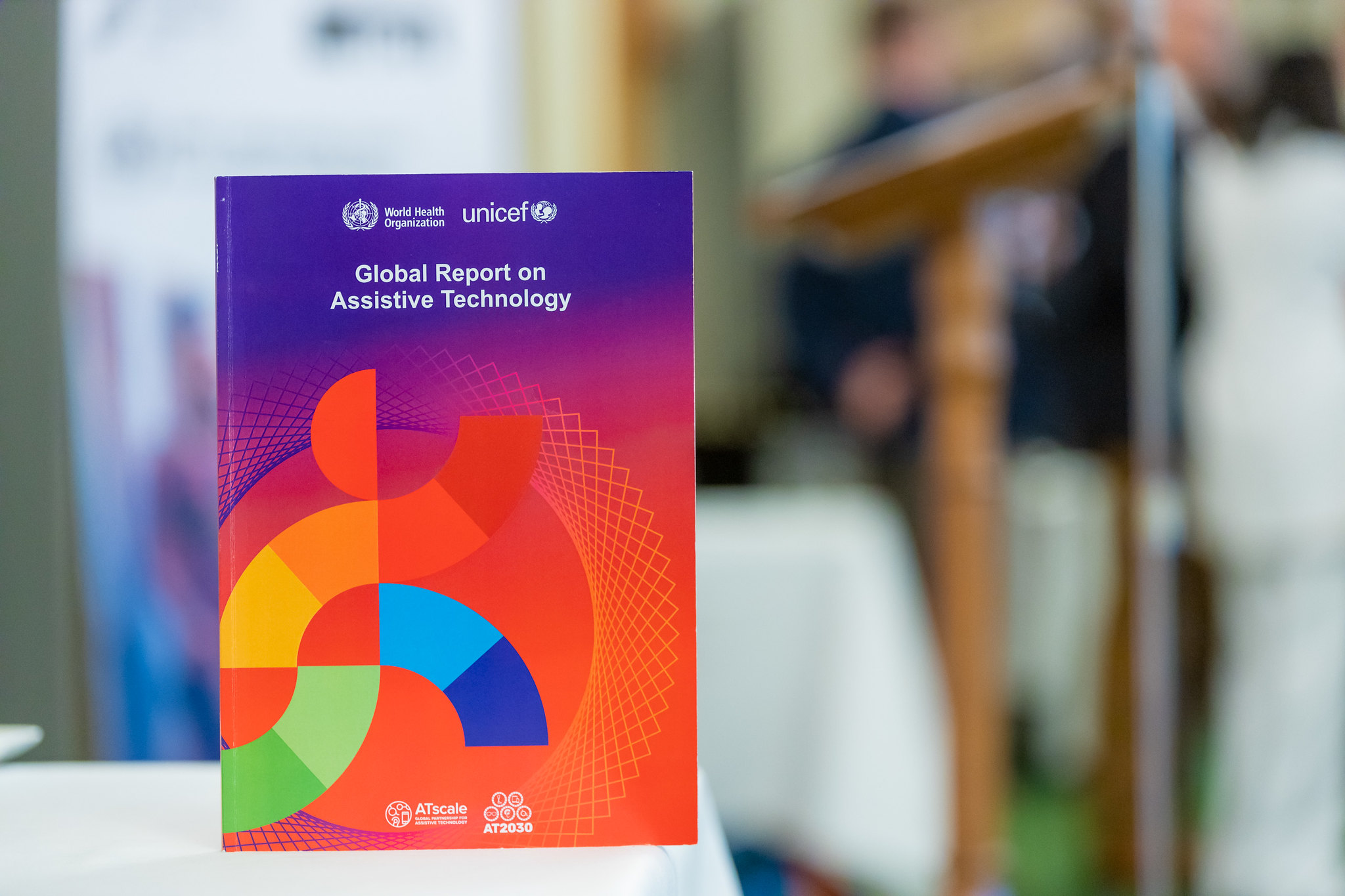
Sub-programme 2 is Led by GDI Hub at UCL with the support of World Health Organisation (WHO), International Society of Prosthetics & Orthotics (ISPO), and London School of Hygience & Tropical Medicine (LSHTM). The sub-programme focuses on the support to the development of the Global Report on Assistive Technology and the examination of evidence that local production systems are possible for AT in LMICs, asking: how can we develop resilient local production ecosystems?
Additionally, it focuses on the development of a series of virtual live labs where entrepreneurs and early-stage ventures can be supported by GDI Hub to develop their products and services and finally, the exploration of options for child powered mobility in LMICs through; the identification of need and motivation, a technical feasibility study and subsequent assessment of delivery feasibility.
Sub-Programmes
- inclusive infrastructure: Holding page
- Impact Stories & Community Collaboration: Storytelling can be a great tool to amplify the voices of disabled people and have their voices heard. Building on our previous work, this project explores ways for creative expressions of disabled people’s lived experiences through multi-sensory impactful storytelling.
Latest
-
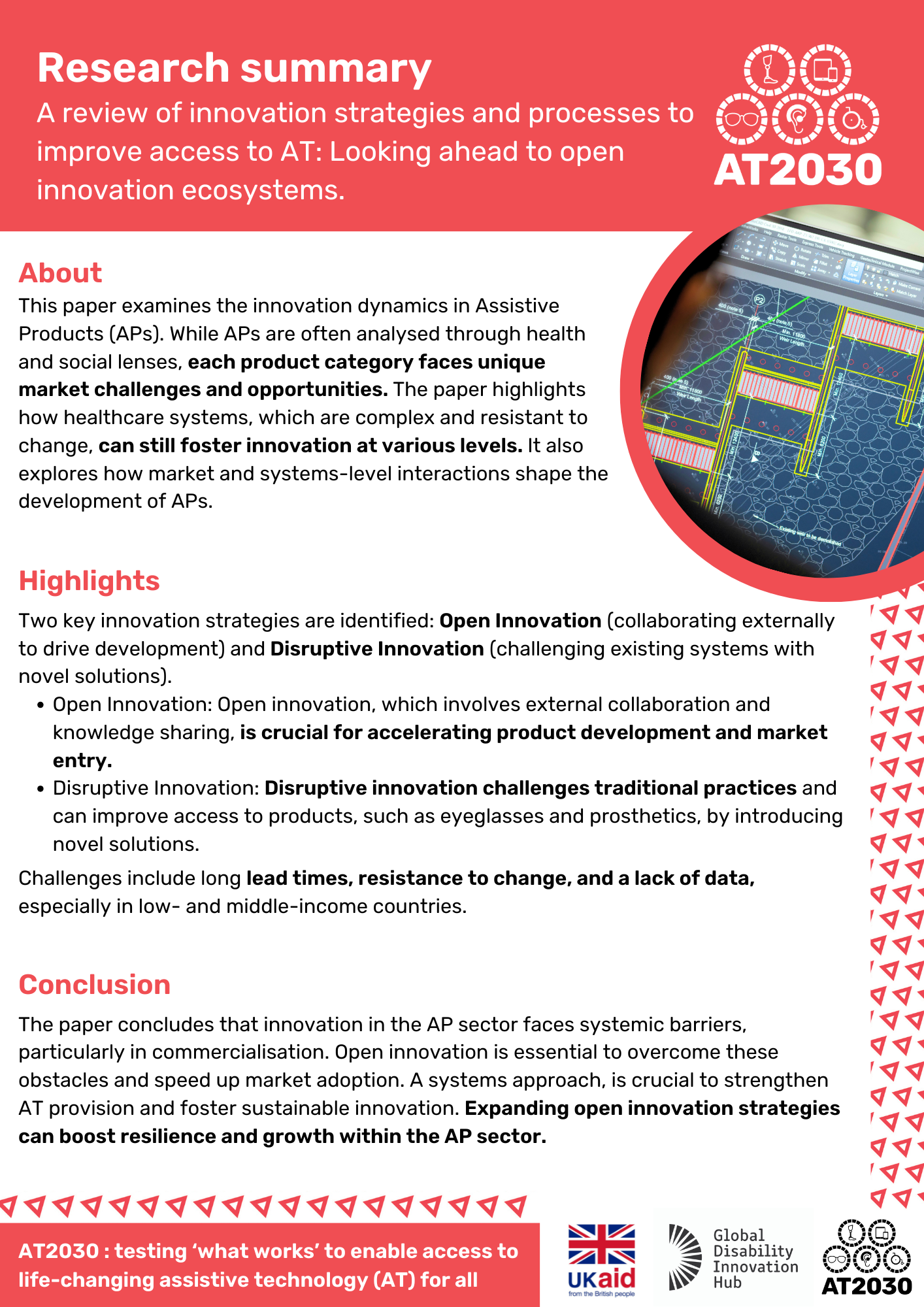
A review of innovation strategies and processes to improve access to AT: Looking ahead to open innovation ecosystems: Research Summary
Felipe Ramos Barajas, Vicki Austin, Dr Ben Oldfrey, Catherine Holloway, Dr Giulia Barbareschi, Malcolm MacLachlan, Rainer Kattel, Joanne McVeigh, Priya Morjaria, Tigmanshu Bhatnagar, George Torrens, Ikenna D. Ebuenyi, Jessica Massie, Dafne Zuleima Morgado Ramirez, Fiona Meeks, Kyle Keane, Cheryl D Metcalf, Srinivasan Sujatha, P. V. M. RaoNov. 7, 2024Research SummariesThis paper explores innovation in Assistive Products (APs), such as wheelchairs, prosthetics, eyeglasses, and hearing aids, emphasising how market dynamics and healthcare systems influence their development. It highlights the importance of *Open Innovation* and *Disruptive Innovation* in overcoming challenges like long lead times, resistance to change, and data gaps, particularly in low-income settings. The paper advocates for enhanced collaboration among stakeholders and recommends leveraging open innovation strategies to accelerate commercialisation and strengthen AP provision.
-
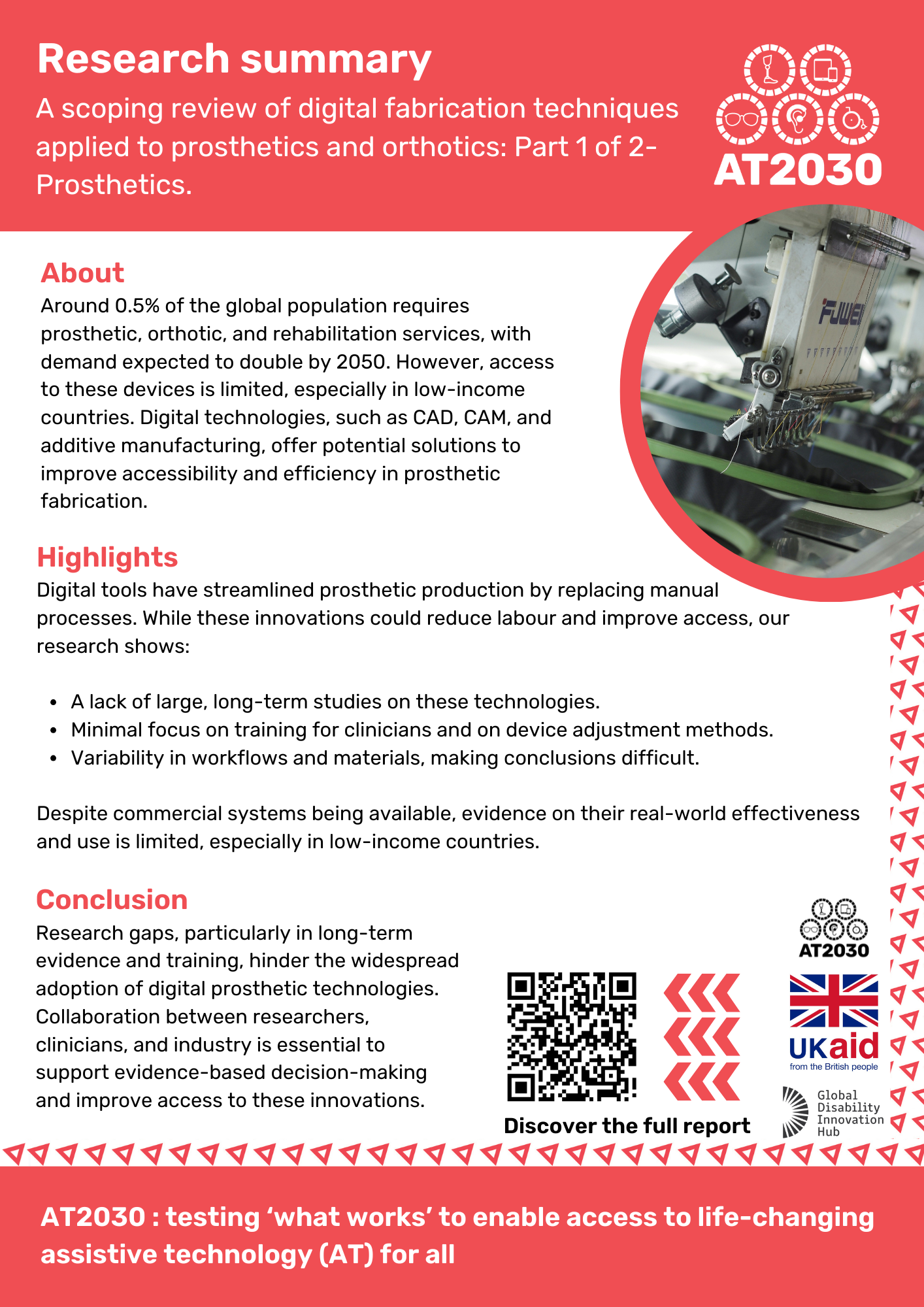
A scoping review of digital fabrication techniques applied to prosthetics and orthotics: Part 1 of 2-Prosthetics (Summary)
Dr Ben Oldfrey, Catherine Holloway, Margaret K Donovan-HallOct. 18, 2024GlobalResearch SummariesClick here to read a summary of our review on digital fabrication techniques applied to prosthetics and orthotics. Digital fabrication offers potential to improve global prosthetic access, but gaps in research, large-scale studies, training, and workflow standardisation hinder evidence-based adoption and practical implementation in real-world clinical settings.
-
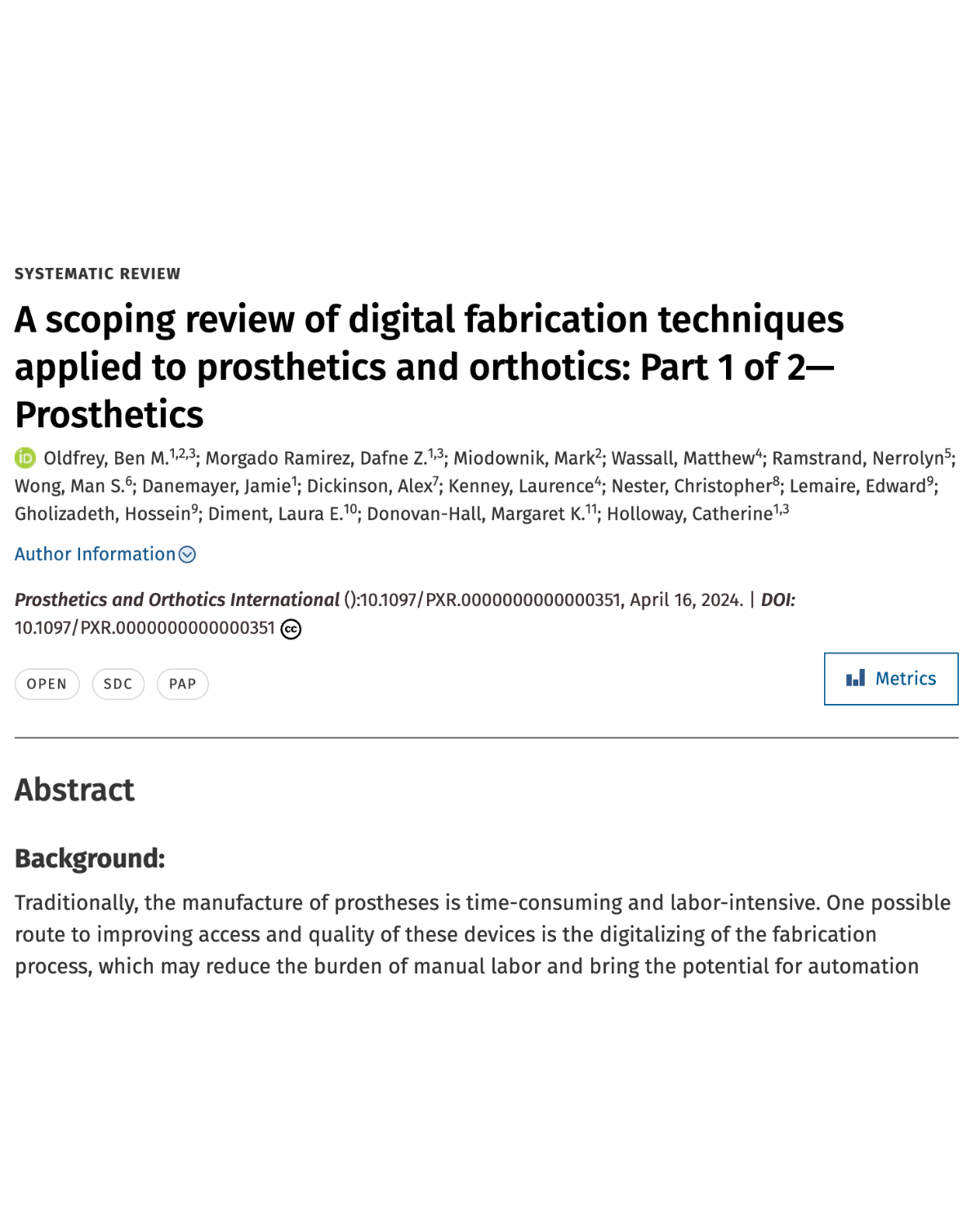
A scoping review of digital fabrication techniques applied to prosthetics and orthotics: Part 1 of 2-Prosthetics
Dr Ben Oldfrey, Dr Dafne Morgado Ramirez, Mark Miodownik, Matthew Wassall, Nerrolyn Ramstrand, Man S Wong, Jamie Danemayer, Alex Dickinson, Laurence Kenney, Christopher Nester, Edward Lemaire, Hossein Gholizadeth, Laura E Diment, Margaret K Donovan-Hall, Catherine HollowayApril 16, 2024GlobalAcademic Research PublicationsThis scoping review examines the application of digital fabrication techniques to prosthetics, aiming to address gaps in the literature that hinder the adoption of these technologies in clinical settings. Traditional prosthetic manufacturing is labor-intensive and time-consuming, but digital fabrication could streamline the process and improve global access. A comprehensive search across multiple databases yielded 3487 articles, with 247 studies on lower and upper limb prosthetics included in the review. The findings highlight significant limitations, including the need for larger, long-term studies, better understanding of training requirements, and variability in production workflows and materials, all of which impede consistent conclusions
-
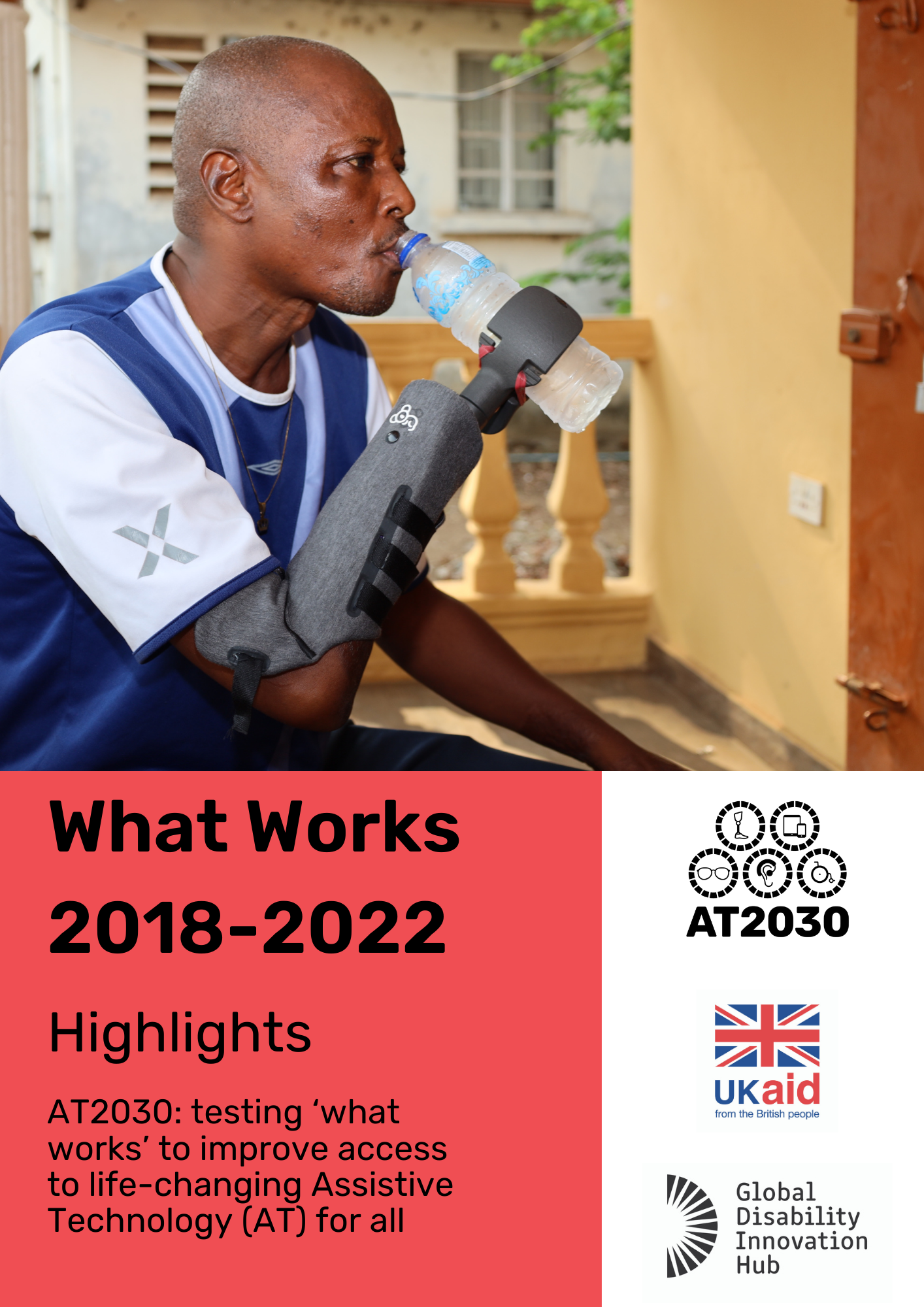
'What Works' highlight report
Global Disability Innovation HubJune 13, 2023GlobalAT2030 ResourcesA key highlights document of 'What Works' to improve access to life-changing Assistive Technology (AT) for all. This report succinctly summarises the past five-years of the AT2030 programme, a £40 million programme funded by UK aid.
-
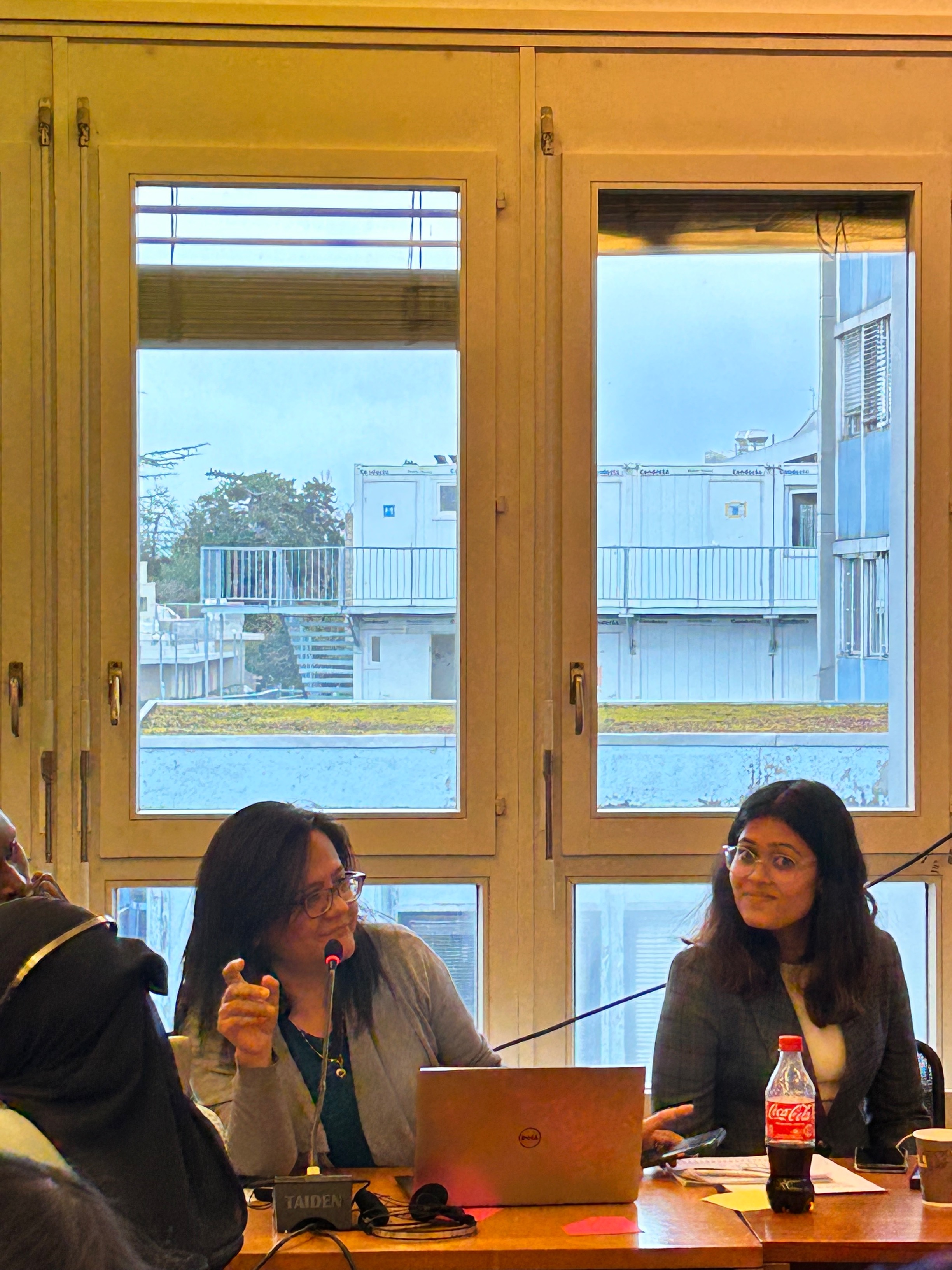
AT Storytelling Workshop with the International Disability Alliance and ATScale
Global Disability Innovation HubMay 31, 2023GlobalWe ran our first AT storytelling workshop as part of the Bridge CRPD-SDGs Training of Trainers Module A in Geneva, Switzerland, organised by the International Disability Alliance (IDA), the International Disability and Development Consortium (IDDC) and supported by partners including the Foreign Commonwealth and Development Office of the UK (FCDO).